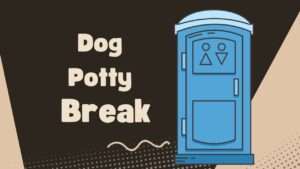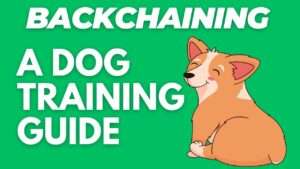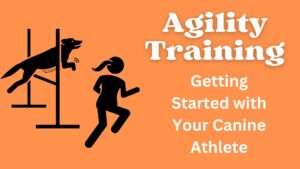Are you tired of cleaning up messes or dealing with accidents around the house? Potty training your dog can be a challenging yet rewarding experience. With the right tips, tricks, and techniques, you can successfully teach your furry friend where and when to do their business. In this complete guide, we’ll explore everything you need to know to effectively potty train your dog, from understanding the basics to implementing proven strategies for success.
Contents Overview
Understanding the Basics
Before diving into the training process, it’s essential to understand the basics of why dogs eliminate and how they learn.
- Why Dogs Eliminate: Dogs eliminate to relieve themselves and mark their territory. Understanding their natural instincts can help you tailor your training approach.
- Learning Process: Dogs learn through repetition, consistency, and positive reinforcement. Patience and persistence are key when it comes to potty training.
Preparation
Before you begin the training process, it’s crucial to prepare yourself and your home for success.
- Gather Supplies: Stock up on essentials such as puppy pads, cleaning supplies, treats, and a leash.
- Establish a Routine: Consistency is key to successful potty training. Establish a regular feeding schedule and take your dog outside frequently, especially after meals, playtime, and naps.
- Choose a Potty Spot: Designate a specific area outside where you want your dog to go potty. Consistently taking them to the same spot can help reinforce the behavior.
Training Techniques
Now that you’re prepared, it’s time to dive into the training techniques that will help your dog master the art of potty training.
- Crate Training: Utilize a crate to confine your dog when you can’t supervise them. Dogs instinctively avoid soiling their sleeping area, making crates an effective tool for potty training.
- Positive Reinforcement: Reward your dog with treats, praise, or playtime whenever they eliminate in the appropriate spot. Positive reinforcement helps reinforce the desired behavior.
- Supervision: Keep a close eye on your dog, especially during the early stages of training. Supervision allows you to quickly redirect them to the designated potty spot if needed.
- Consistency: Stick to a consistent routine and approach throughout the training process. Dogs thrive on predictability, so consistency is key to their success.
- Redirecting Accidents: If you catch your dog in the act of eliminating indoors, quickly interrupt them with a firm “no” and take them outside to their designated potty spot.
Troubleshooting Common Challenges
Even with the best intentions, potty training doesn’t always go smoothly. Here are some common challenges you may encounter and how to overcome them:
- Accidents: Accidents are bound to happen during the training process. Stay patient and consistent, and avoid punishing your dog for accidents.
- Stubbornness: Some dogs may take longer to grasp the concept of potty training. Stay persistent and continue using positive reinforcement to encourage the desired behavior.
- Fear of Outdoors: If your dog seems hesitant to go potty outside, gradually introduce them to the outdoors with short, positive experiences. Offer treats and praise to help alleviate any fears.
- Medical Issues: In some cases, accidents may be due to underlying medical issues. If you suspect your dog is having trouble with potty training due to a medical problem, consult with your veterinarian.
Bottom Line
Potty training your dog requires time, patience, and consistency, but the rewards are well worth the effort. By understanding the basics, preparing properly, and implementing proven training techniques, you can teach your furry friend where and when to do their business effectively. Remember to stay positive, celebrate progress, and be patient with your pup throughout the training journey. With dedication and perseverance, you’ll soon enjoy a cleaner, happier home with your potty-trained dog by your side.
FAQs
It typically takes about 4-6 months to fully potty train a dog. However, the timeframe can vary depending on factors such as the dog’s age, breed, and previous training experiences.
To prevent accidents indoors, establish a consistent routine, supervise your dog closely, use positive reinforcement, and promptly clean up any accidents with an enzymatic cleaner to remove lingering odors.
To potty train a dog quickly, focus on consistency, positive reinforcement, and supervision. Establish a regular routine, take your dog outside frequently, and reward them generously for eliminating in the appropriate spot.
Small breeds, such as Dachshunds, Chihuahuas, and Toy Breeds, are often considered more challenging to potty train due to their small bladders and high energy levels.
Generally, larger breeds with longer attention spans, such as Labradors, Golden Retrievers, and Standard Poodles, tend to be easier to potty train compared to smaller breeds.
A typical potty schedule for a puppy includes taking them outside:
Every 1-2 hours during the day
Shortly after waking up, after meals, and after play sessions
Right before bedtime
Monitoring closely for signs that they need to go, such as sniffing or circling
While some people believe that vinegar can deter dogs from eliminating indoors due to its strong odor, there is limited scientific evidence to support this claim. It’s best to focus on proper training techniques and consistency to prevent accidents.
Dirty dog syndrome refers to the accumulation of bacteria, yeast, and debris in a dog’s ears due to inadequate cleaning or improper grooming practices. It can lead to ear infections and discomfort for the dog if not addressed promptly.
Encourage your dog to go potty outside by using high-value treats, praising them enthusiastically when they eliminate outdoors, and consistently taking them to the designated potty spot. Patience and positive reinforcement are key when dealing with a stubborn dog.
To prevent nighttime accidents, limit your dog’s access to water a few hours before bedtime, take them outside for a final potty break right before bedtime, and consider using a crate to confine them overnight. Gradually increase the duration between nighttime potty breaks as your dog becomes more reliable.





























+ There are no comments
Add yours